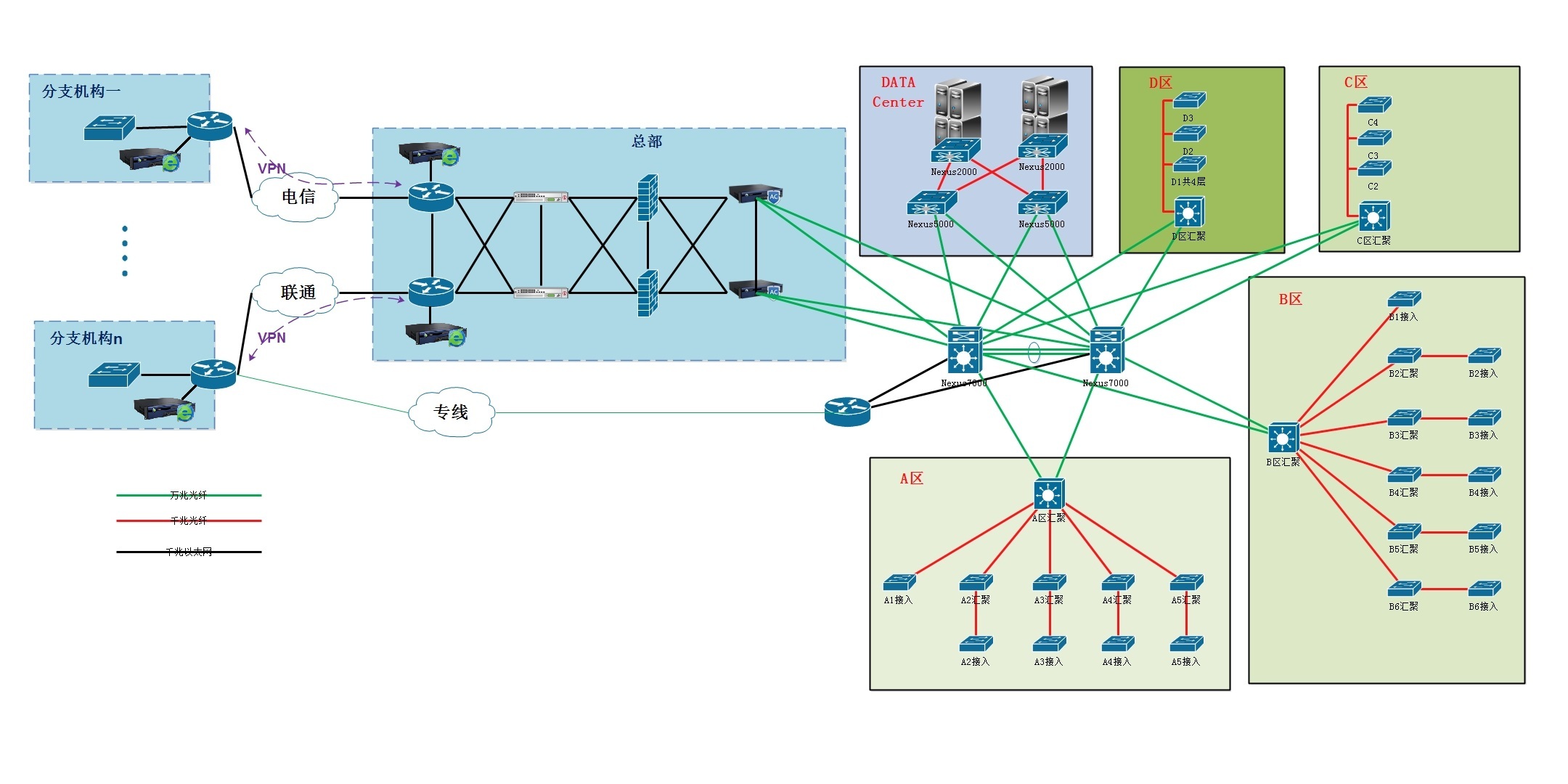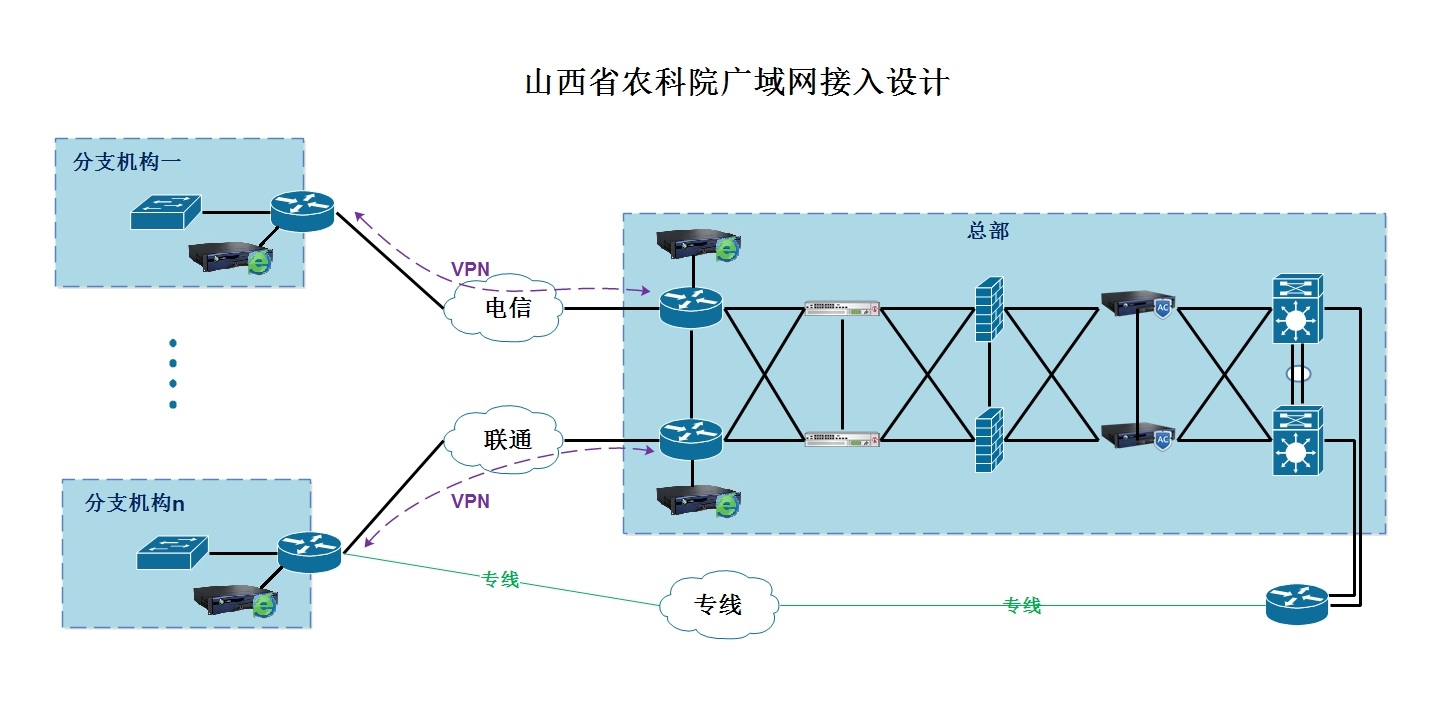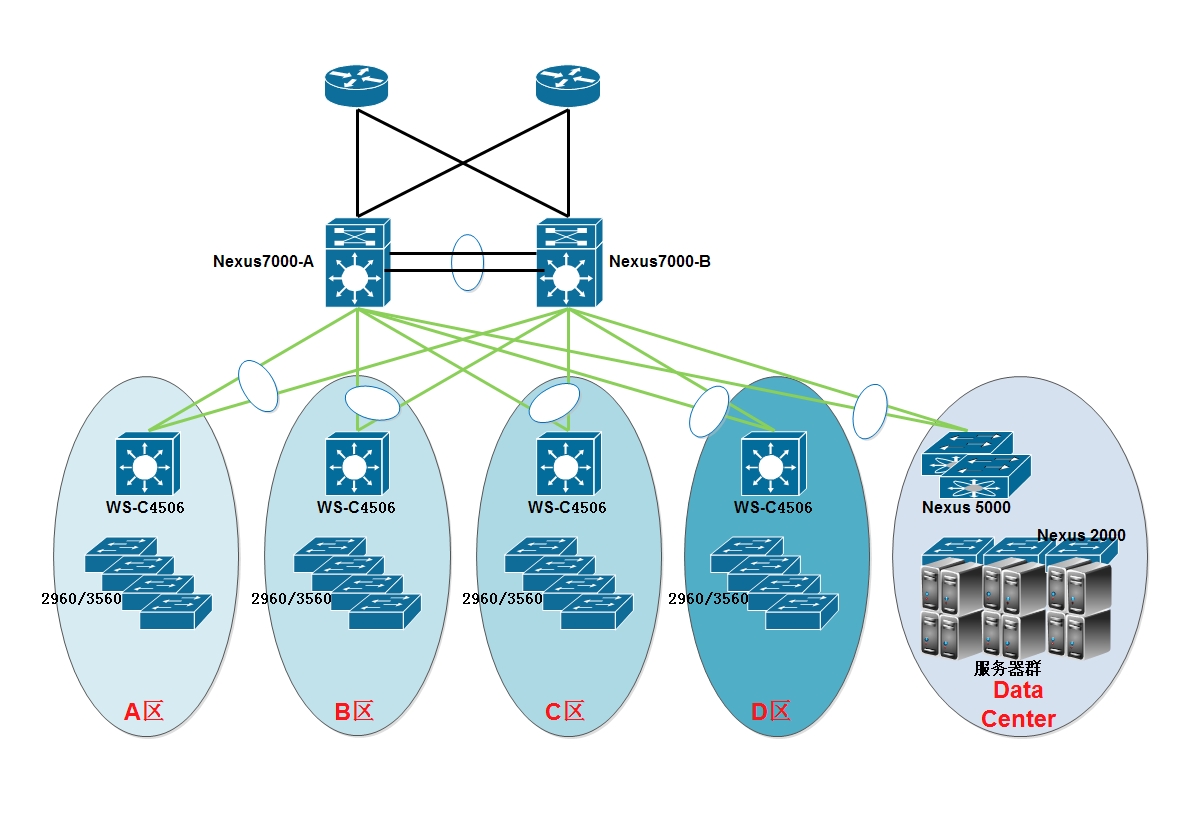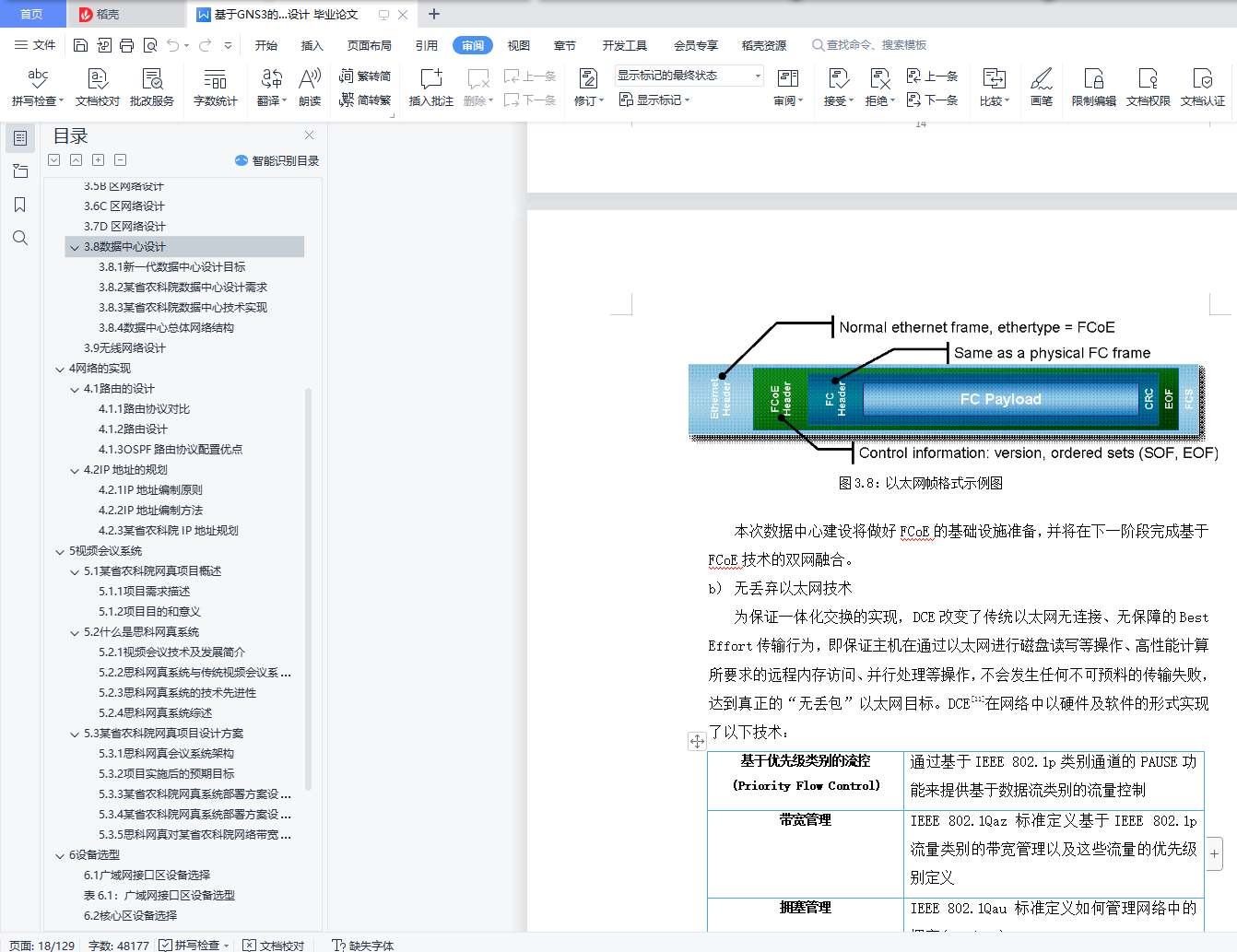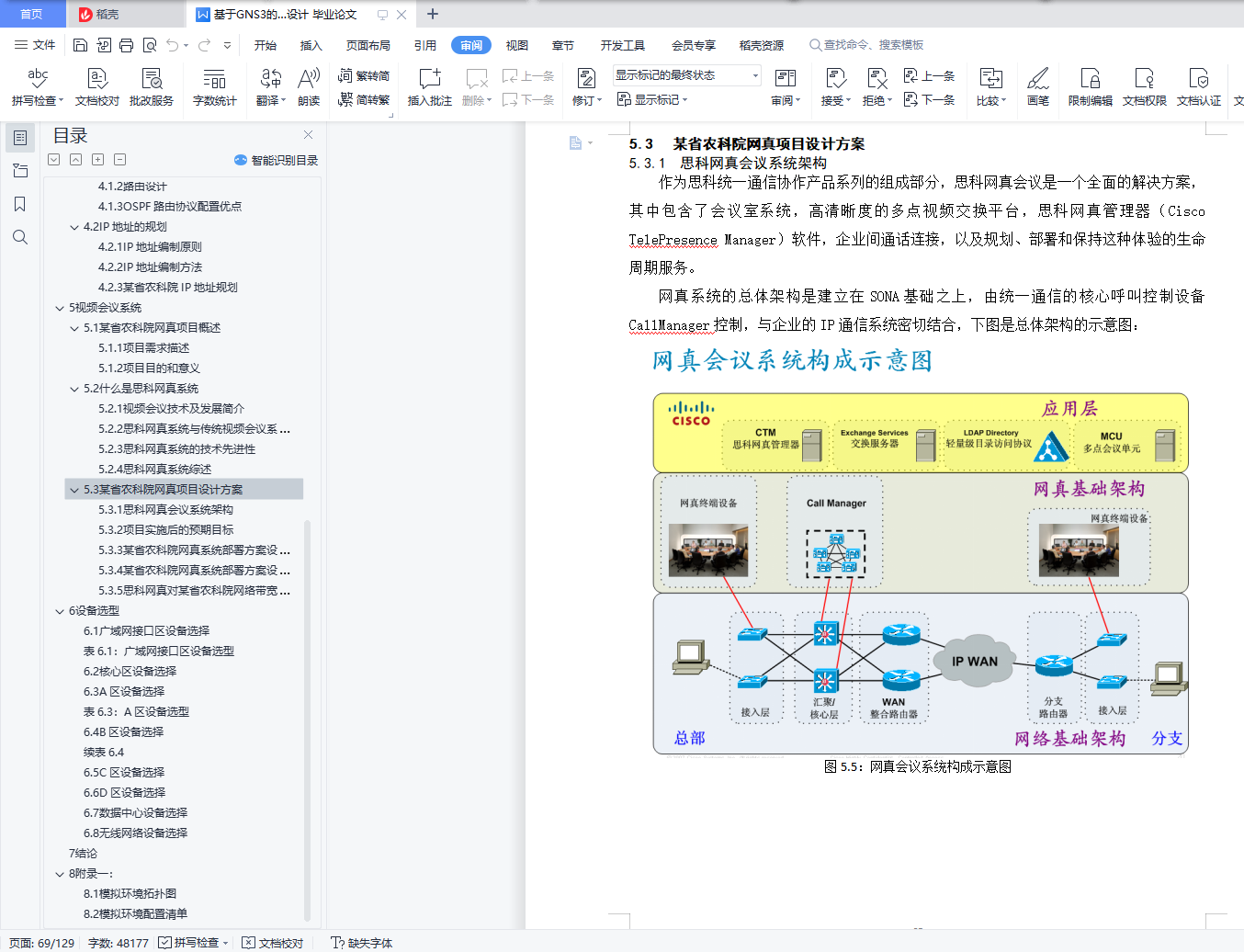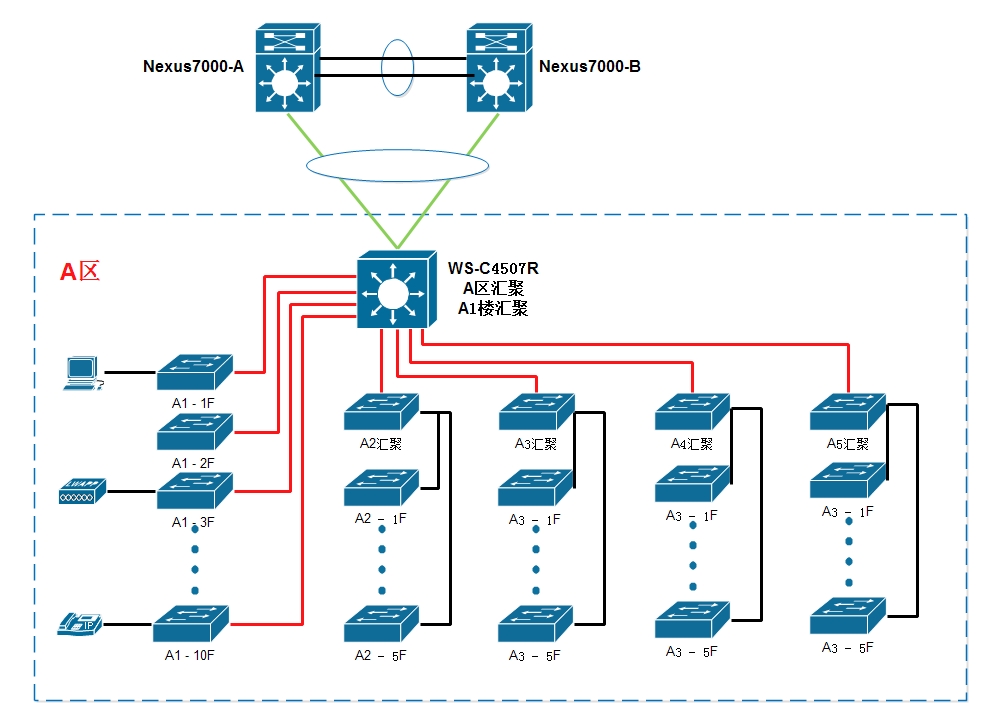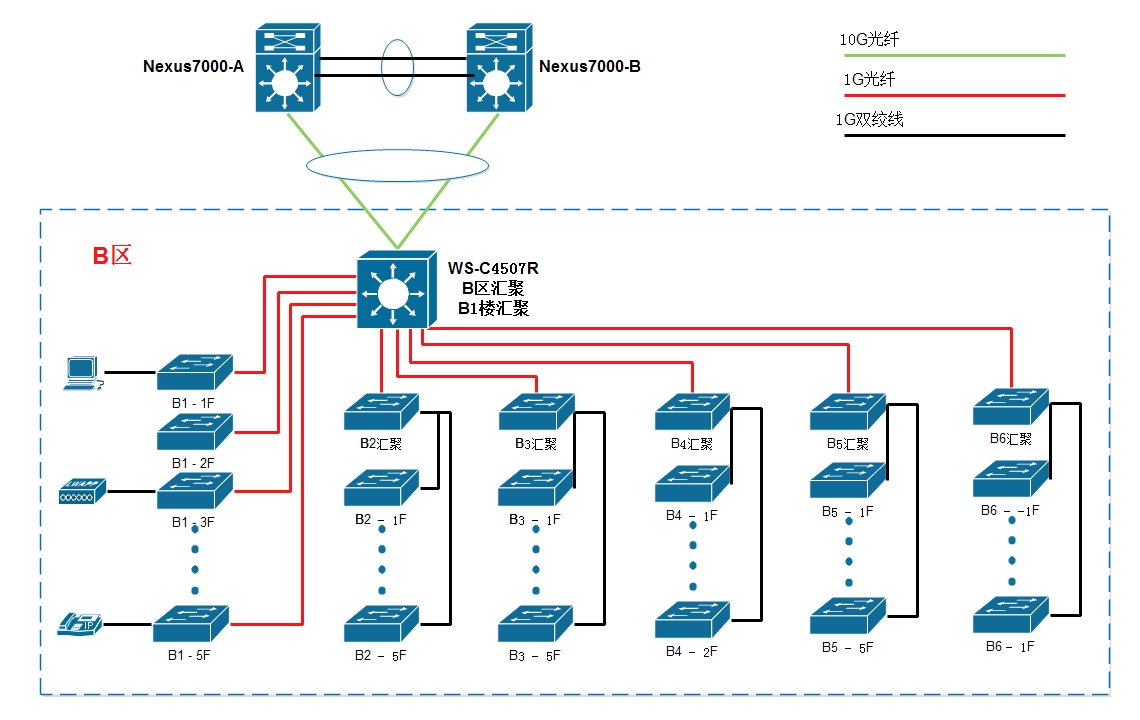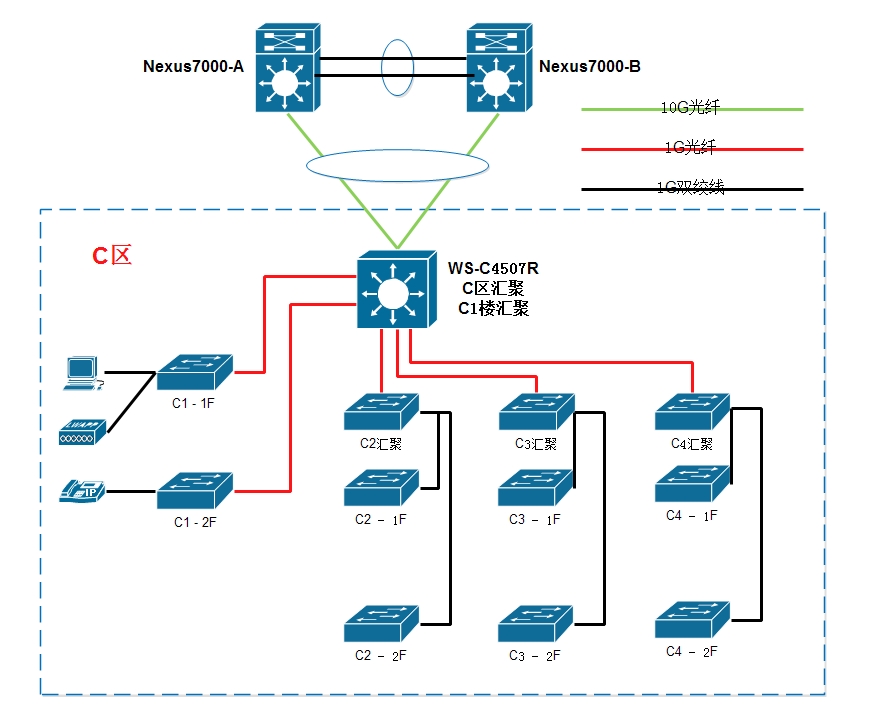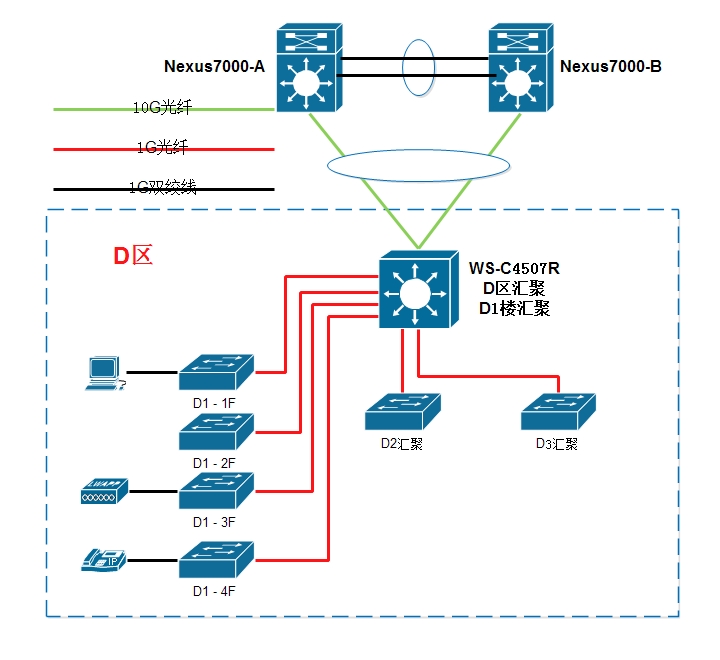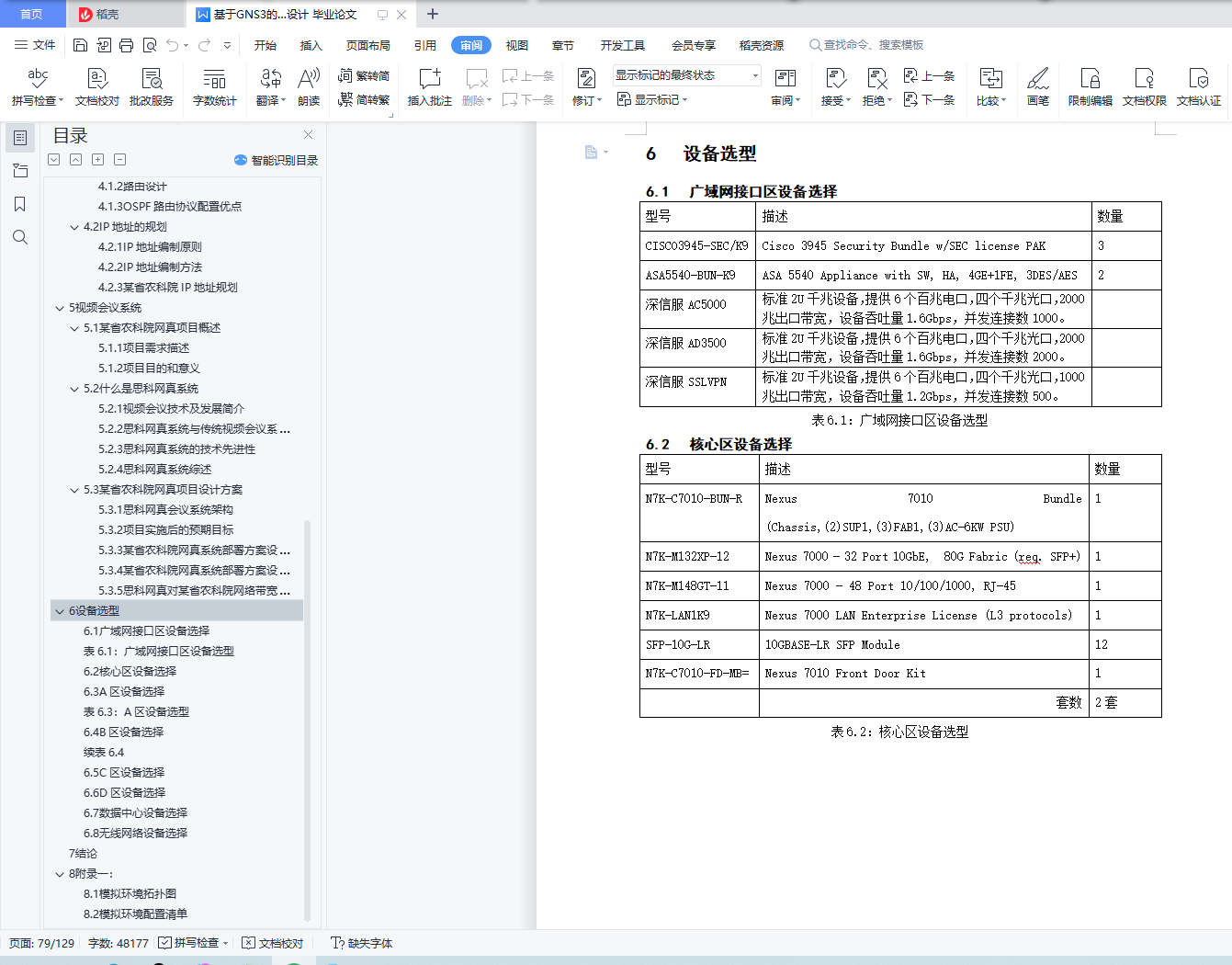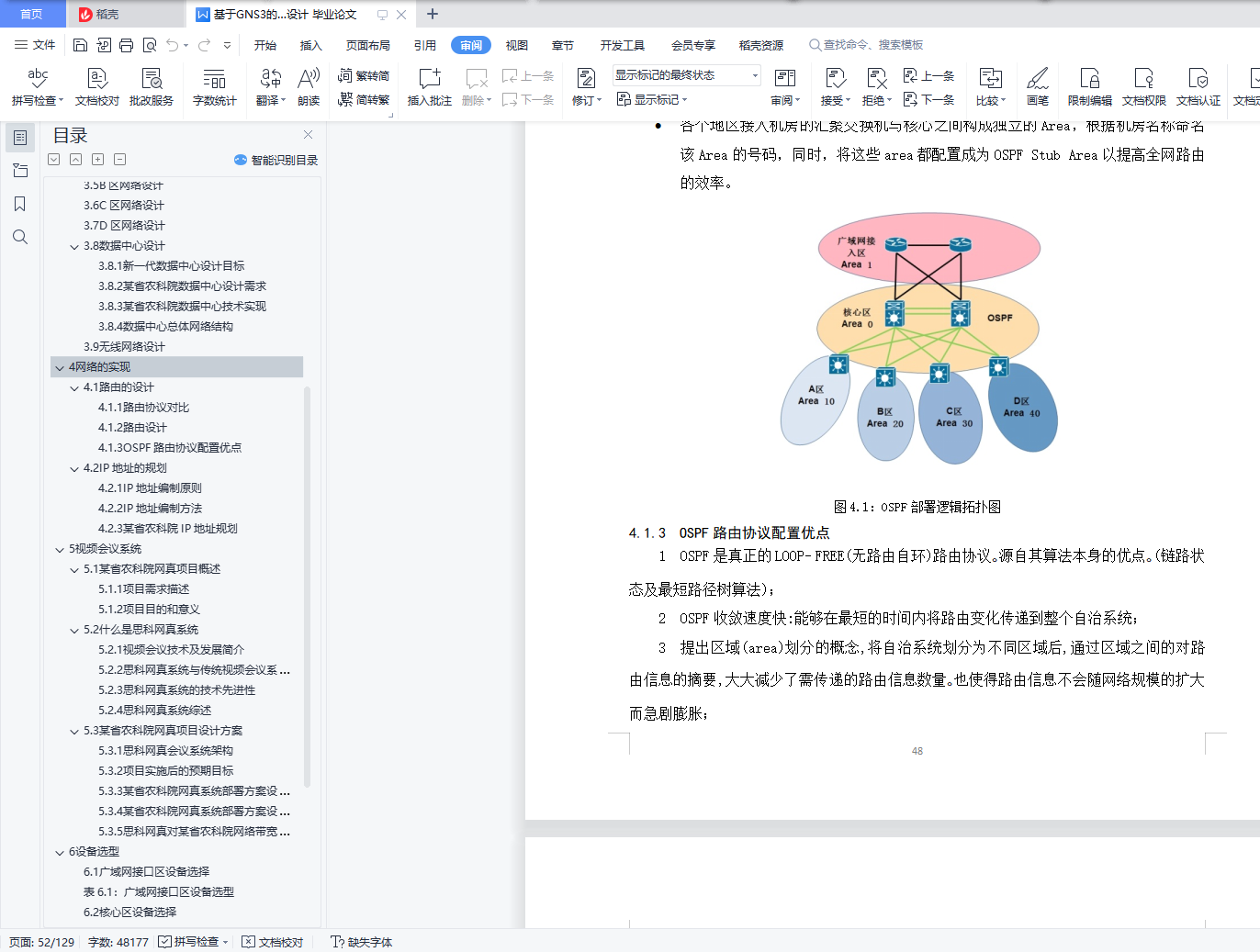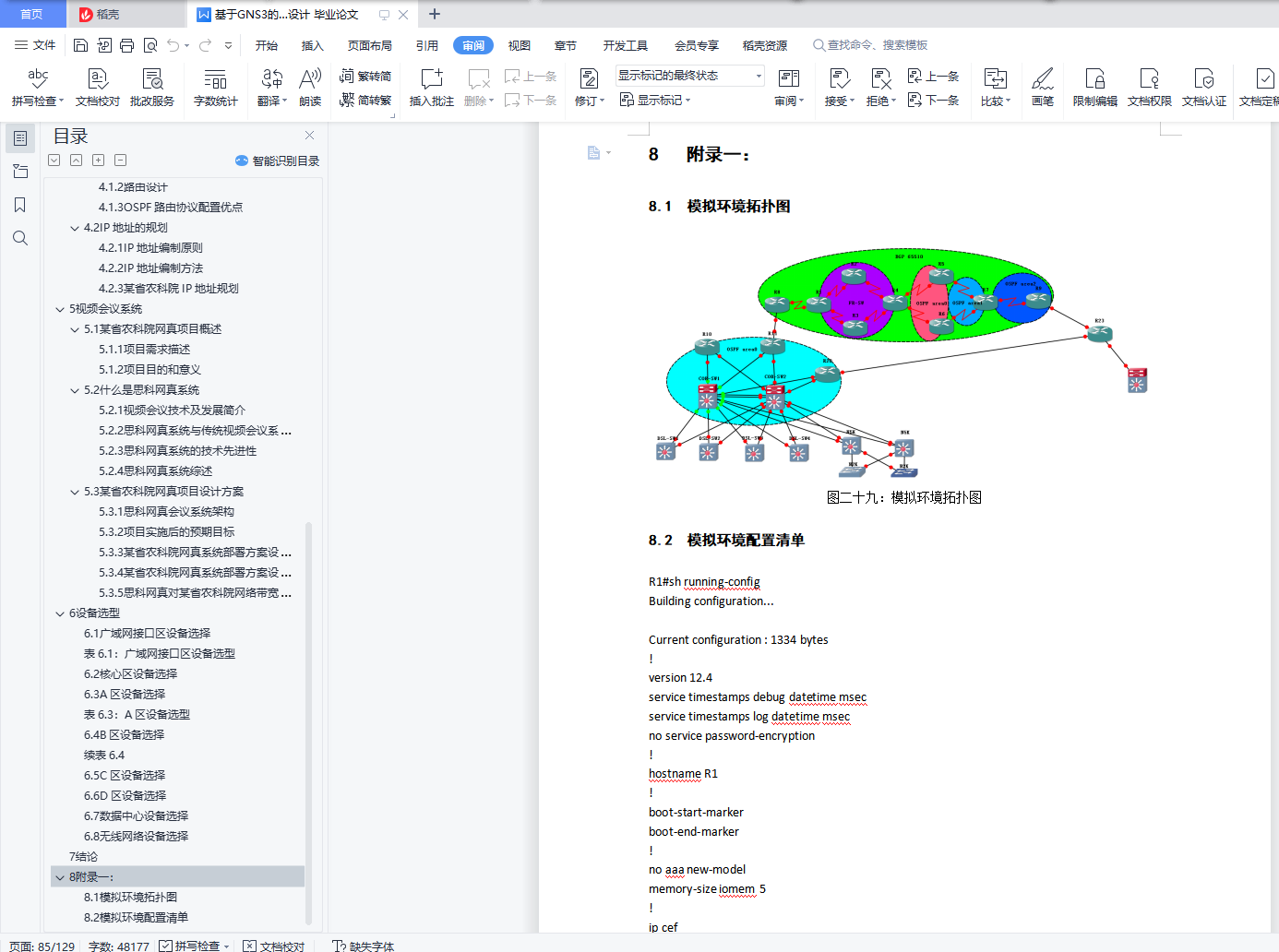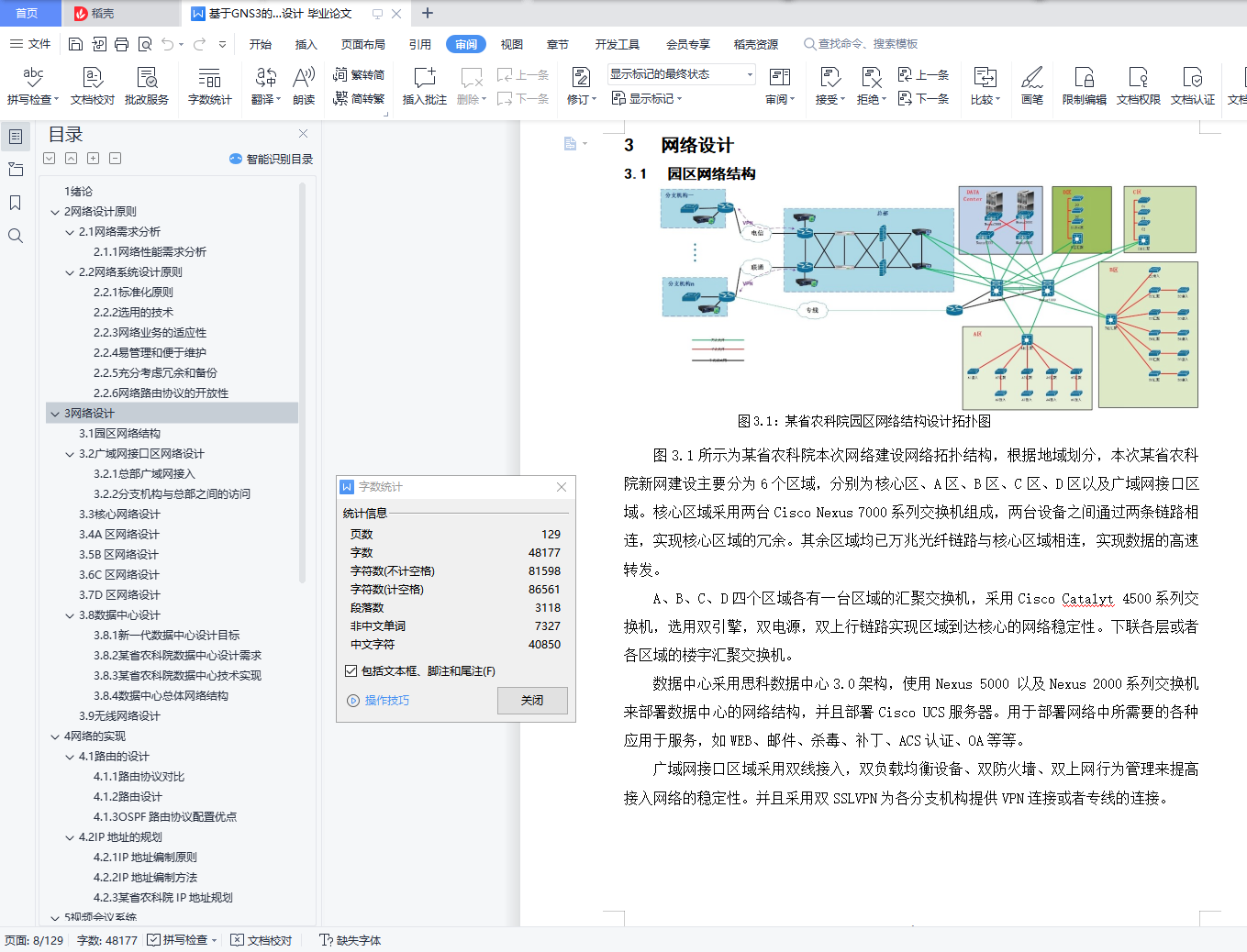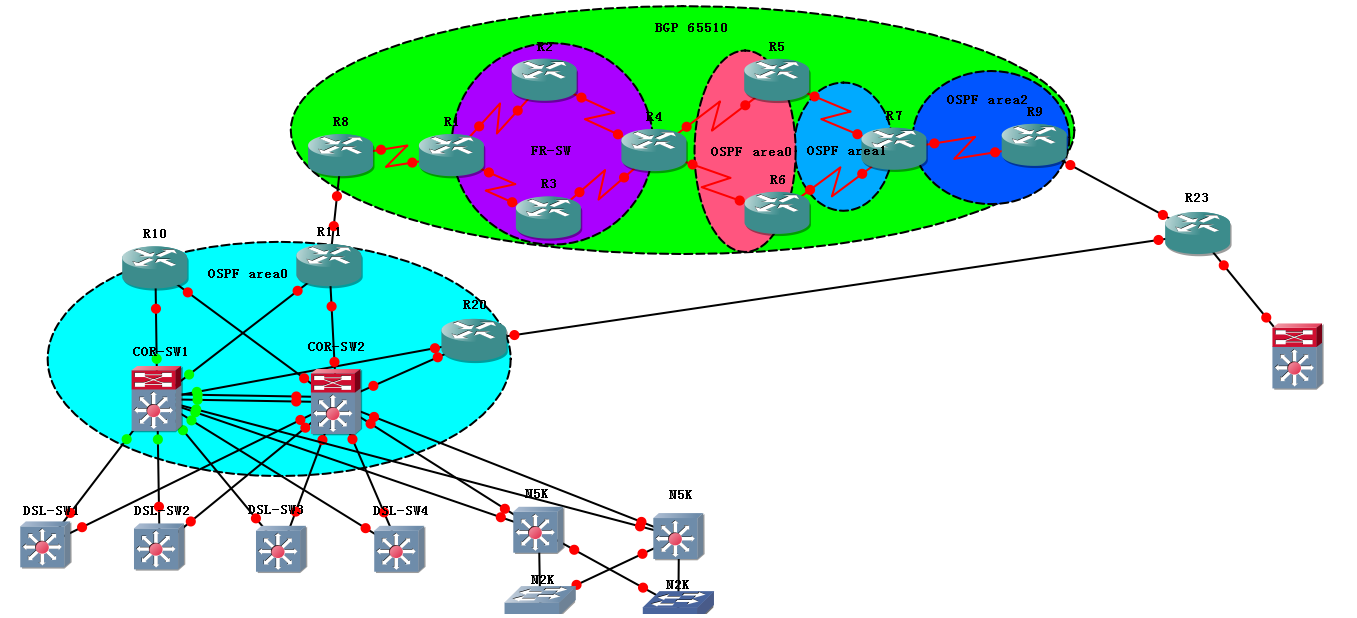摘要
本次毕业设计为某省农科院网络组网方案,目的是为某省农科院建设一个高速、稳定、安全的网络。在此次网络建设中,我采用思科三层模型,也就是核心层,汇聚层,接入层构建局域网,实施过程中划分为广域网接入区,核心区,汇聚A区,汇聚B区,汇聚C区,汇聚D区以及数据中心区域来分区域解决网络连接问题。
首先广域网接入区域我用了负载均衡设备,路由器设备,上网行为管理器设备以及SSLVPN设备,在核心区域,我采用了两台思科的Nexus7000系列交换机与广域网出口路由器之间建立OSPF协议,保证数据可靠安全的传输,同时部署了GLBP协议,让网关拥有冗余机制,并且在核心交换机上做DHCP下放,从而使用户可以更方便的接收IP地址。同时在A,B,C,D四个区域分别部署了思科4506汇聚交换机系列,并且在这些交换机上分别使用了PVST+协议,从而达到了数据的冗余传输。在接入层采用思科2960接入交换机。并且在所有交换机上启用VTP协议,从而达到VLAN的高效快速的管理。
关键词:思科三层模型, OSPF,GLBP, PVST+,VTP
abstract
The graduation design for network scheme, shanxi academy of agricultural sciences' network aims to Shanxi Province academy of agricultural sciences' building a high-speed, stable and secure network. In the construction of the network, I use the cisco three-layer model, also is the core layer, convergence layer and access layer to build local area network (LAN), divided into A wide area network access area, during the process of implementing core area, area A, and convergence area B, the funnel area C, convergence D area and region to region to solve data center network connection problem.
First wan access areas I use load balancing device, the router equipment, Internet behavior management equipment and SSLVPN equipment, in the core area, I have adopted two cisco Nexus7000 series switches and wan router OSPF agreement between exports, to ensure reliable data security transmission, deploy the GLBP agreement at the same time, let the gateway has the redundancy mechanism, and DHCP on the core switch, which allows a user to a more convenient receiving IP address. At the same time in A, B, C, D four areas, respectively, to deploy the cisco 4506 convergence switch series, and on these switches used PVST + protocol respectively, so as to achieve the redundancy of data transmission. In the access layer of the cisco 2960 access switches. And enable the VTP agreement on all switches, so as to achieve efficient and rapid management VLAN.
Key words: cisco three-layer model, OSPF, GLBP, PVST+, VTP
目录
1 绪论 1
2 网络设计原则 1
2.1 网络需求分析 1
2.1.1 网络性能需求分析 1
2.2 网络系统设计原则 3
2.2.1 标准化原则 3
2.2.2 选用的技术 3
2.2.3 网络业务的适应性 3
2.2.4 易管理和便于维护 3
2.2.5 充分考虑冗余和备份 3
2.2.6 网络路由协议的开放性 3
3 网络设计 4
3.1 园区网络结构 4
3.2 广域网接口区网络设计 5
3.2.1 总部广域网接入 5
3.2.2 分支机构与总部之间的访问 6
3.3 核心网络设计 7
3.4 A区网络设计 8
3.5 B区网络设计 9
3.6 C区网络设计 10
3.7 D区网络设计 11
3.8 数据中心设计 12
3.8.1 新一代数据中心设计目标 12
3.8.2 某省农科院数据中心设计需求 12
3.8.3 某省农科院数据中心技术实现 13
3.8.4 数据中心总体网络结构 22
3.9 无线网络设计 42
4 网络的实现 42
4.1 路由的设计 43
4.1.1 路由协议对比 43
4.1.2 路由设计 48
4.1.3 OSPF路由协议配置优点 48
4.2 IP地址的规划 49
4.2.1 IP地址编制原则 49
4.2.2 IP地址编制方法 50
4.2.3 某省农科院IP地址规划 51
5 视频会议系统 53
5.1 某省农科院网真项目概述 53
5.1.1 项目需求描述 53
5.1.2 项目目的和意义 54
5.2 什么是思科网真系统 55
5.2.1 视频会议技术及发展简介 55
5.2.2 思科网真系统与传统视频会议系统的区别 57
5.2.3 思科网真系统的技术先进性 59
5.2.4 思科网真系统综述 62
5.3 某省农科院网真项目设计方案 65
5.3.1 思科网真会议系统架构 65
5.3.2 项目实施后的预期目标 66
5.3.3 某省农科院网真系统部署方案设计原则 66
5.3.4 某省农科院网真系统部署方案设计 66
5.3.5 思科网真对某省农科院网络带宽的需求分析 72
6 设备选型 75
6.1 广域网接口区设备选择 75
表6.1:广域网接口区设备选型 75
6.2 核心区设备选择 75
6.3 A区设备选择 76
表6.3:A区设备选型 76
6.4 B区设备选择 76
续表6.4 77
6.5 C区设备选择 77
6.6 D区设备选择 78
6.7 数据中心设备选择 78
6.8 无线网络设备选择 79
7 结论 80
8 附录一: 81
8.1 模拟环境拓扑图 81
8.2 模拟环境配置清单 81
